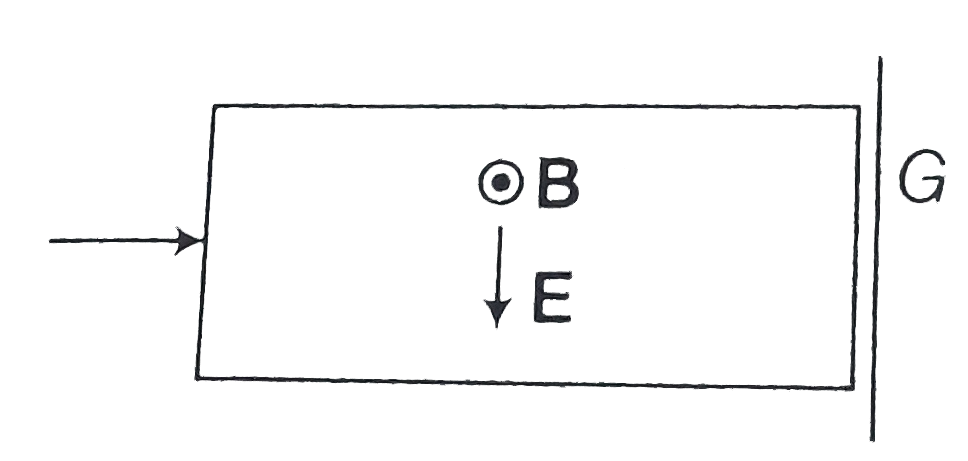An electron enters with a velocity into a cubical region (faces parallel to coordinate planes) in which there are uniform electric and magnetic fields. The orbit of the electron is found to spiral down inside the cube in plane parallel to the x-y plane. Suggest a configuration of fields and that can lead to it.
Considering magnetic field , and an electron enters with a velocity and cubical region (Faces parallel to coordinate planes.)
The force on electron, using magnetic lorentz force, is given by
Which revolves the electron in x-y plane.
The electric force accelerates e along z-axis which in turn encreases the radius of circuclar path and hence particle traversed on spiral path.
Topper's Solved these Questions
Similar Questions
What is the net flux of the uniform electric field of Q.15 thorugh a cube of side 20cm oriented so that its faces are parallel to the co-ordinate planes ?
View SolutionWhat is the net flux of the uniform electric field of the above question through a cube of side 20 cm oriented so that its faces are parallel to the coordinate planes?
View Solution
Knowledge Check
A cubical region of space is filled with some uniform electric and magnetic fields. An electron enters the cube across one of its faces with velocity →v and a positron enters via opposite face with velocity −→v. At this instant,
Athe electric forces on both the particles cause identical accelerationsBthe magnetic forces on both the particles cause equal accelerationCboth particles gain or loose energy at the same rateDthe motion of the centre of mass (CM) is determined by →B aloneA cubical region of space is filled with some uniform electric and magnetic field. An electron enters the cube across one of its faces with velocity v and a positron enters via opposite face with velocity −v. At this instant, which one of the following is not correct?
AThe electric forces on both the particles cause identical acceleration.BThe magnetic forces on both the particles cause equal acceleration.CBoth particles gain or loose energy at the same rate.DThe motion of the centre of mass is determined by B alone.An electron is moving with an initial velocity →v=v0ˆi and is in a magnetic field →B=→B0ˆj. Then its de-Broglie wavelength
Aremains constantBincreases with timeCdecreases with timeDincreases and decreases periodically.
A 10eV electron is circulating in a plane at right angles to a uniform field at magnetic induction 10−4Wb/m2 (=1.0 gauss). The orbital radius of the electron is
View SolutionA uniform electric field →E exists in a region parallel to Y-axis. How much work will be done on a charge q in displacing it in this field, parallel to x-z plane?
View SolutionA stream of electron and protons are directed towards a narrow slit in a screen the intervening region has a uniform electric field E vertically downwards and a unifrom magnetic field B out of the plane of the as shown then

View SolutionA charged particle moving with a uniform velocity →v enters a region where uniform electric and magnetic fields →E and →B are present. It passes through the region without any change in its velocity. What can we conclude about the (i) relative direction of →E, →V and →B? (ii) magnetic of →E and →B?
or
Find the condition under which the charged particle moving with different speeds in the presence of electric and magnetic field vectors can be used to select charged particles of a particular speeds.
View SolutionAn electron is moving with an initial velocity →v=v0ˆi and is in a magnetic field →B=B0ˆj. Then it's de-Broglie wavelength
View Solution
